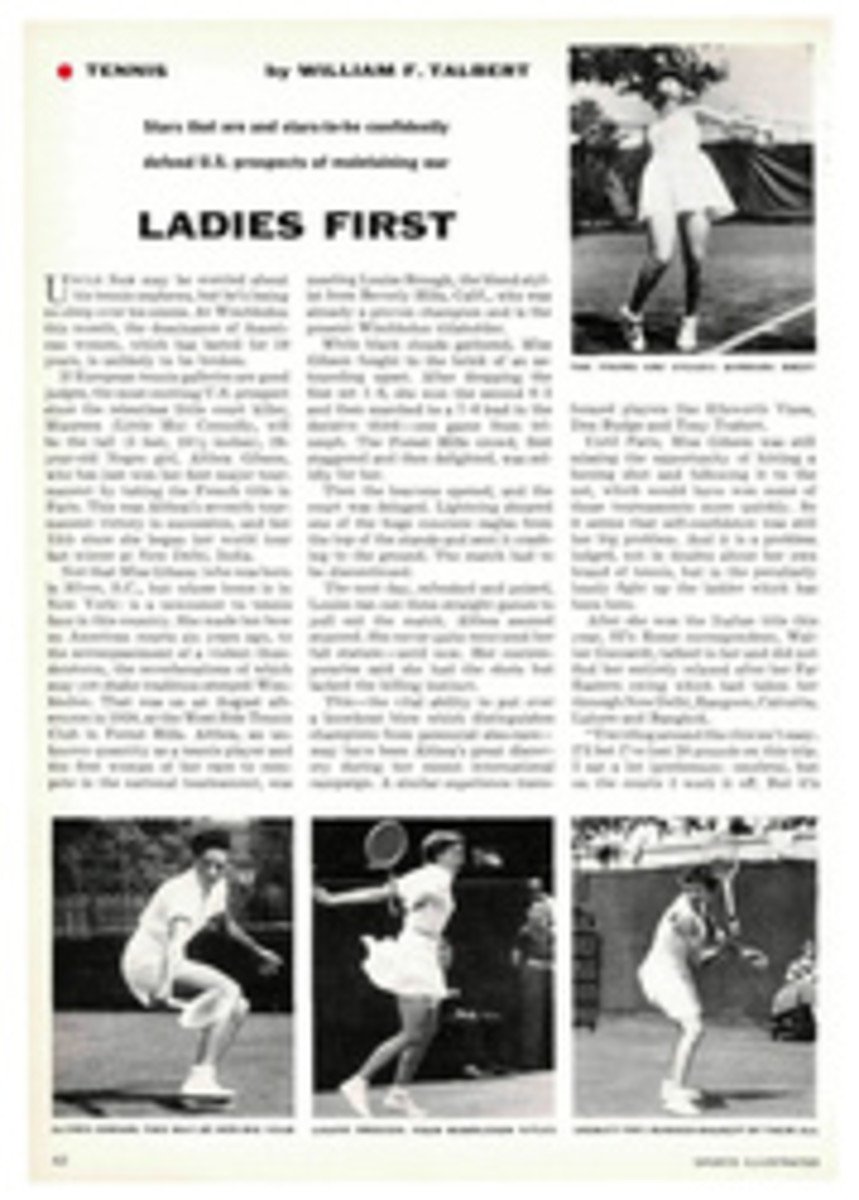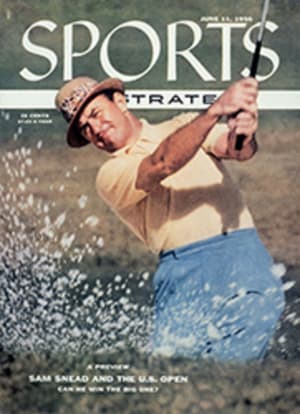
WHITE WATER'S WRATH
A white-water river can be a vicious opponent to a racer like the one shown at right battling the rapids in a thin-skinned kayak. But even the most wicked of streams gives warnings to the man who can read them. Such a man is Erich Seidel, one of the top favorites in the downriver race at Salida, Col., June 17.
"Just before you reach the rapids the water becomes flat and smooth and nice like a lamb," says the blond, German-born Seidel. "But you hear the low noises ahead—and you know that the rapids are there."
As the kayak slides onto the glassy tongue of the rapid that sucks it into the white water, even the most seasoned riverman feels a bolt of fear. Spray stings his face and cuts his vision. He hunches forward, thighs and feet braced against the fragile birch frames, his hips swiveling with each sudden wrench of the boat. A wave smashes against his face, and for a moment he is completely under. But he bobs up and finally breaks through to safe water. Once out he risks a last look back at the rapids and is swept by exultation. "You have challenged nature and won," Seidel explains, "and there is no feeling like it in the world."
Not all the 25 entries who expect to challenge the tortured 25.7-mile stretch of the Arkansas River next week can count on a triumphant look back. After a winter of heavy snow the river is running two feet higher than last year; and Salida veterans know what a difference two feet can make on a river so powerful that even in the knee-deep shallows a canoe or kayak that spins broadside to a rock may be snapped in half by the force of the 10-mile current. "When the water goes up only a couple of inches," says Larry Campton, a Salida native whose fifth-place finish last year was the best for an American, "the whole river changes. The rapids go crazy."
The river was just this way in the spring of 1949 when, in the first impromptu white-water race, an assortment of rubber tubes, life rafts and belly tanks and one kayak shoved off for a 60-mile plunge downriver to Canyon City. Only the kayak finished that first wild affair. But it was hailed as an unqualified success, and established as an annual event. Since then the course has been shortened to its present length and the belly tanks have given way to canoes and more kayaks.
In 1953 a platoon of crack German river racers, headed by Erich Seidel, 26, national German slalom champion, and Theo Bock, 43, persuaded Salida to add a slalom, a short obstacle race with time penalties for each obstacle touched. Seidel easily won it. And afterward he flashed through the down-river in record time to edge out Bock for a double victory. Both men admitted, however, that the Arkansas had given them all they could handle. Seidel frankly conceded he was nervous as he approached the vicious Cottonwood rapids shown on these pages. Bock, who finished the race exhausted, announced his immediate retirement: "A race like this is enough. There is nothing in Europe to compare with it."
Frightened or not, Seidel was so taken by the river and the town that he filed for immigration papers and settled on the banks of the Arkansas. In 1954 he again won the Salida slalom and placed second in the amateur division of the expanding downriver entry. Last spring he had to withdraw because of an arthritic shoulder and missed the biggest race so far. Thirty thousand spectators lined the banks. The Denver & Rio Grande Western sent out a spectator train with 600 passengers aboard. And 5,000 automobiles crawled along the roads by the river.
This year the crowds should be even bigger; and Seidel, his shoulder healed, expects to give them a show. He will be favored to win the slalom, and perhaps the downriver as well. But he will get strong competition from Sigi Holzbauer, 20, the present world slalom champion, and Xaver Wursfmanndobler, 22, a skilled and powerful paddler.
Seidel, however, is quietly confident, and in spite of his slight build—he weighs only 115 pounds—he is conceding nothing to his opponents. Besides his acknowledged skill, he has another advantage in that he lives by the river. During the days before the race he walks the bank, watching and listening for the rough, rumbling messages the rapids send to a riverman.
"The river gives signs," says Seidel, "and you have to be able to understand what he is saying to you. By his green or blue color he tells you what the bottom is like. By his high or deep sounds he points out where the rocks are hiding. By his waves he tells you whether the rocks are big or small. He warns you when to stop and turn. Every river has a different character. The more rivers you know the easier you can tell if one is good or bad."
What of the Arkansas?
"He's an honest river," says Erich Seidel. "He tells you right from the beginning that you have to fight, and he tells you the truth."
PHOTO
MARGARET DURRANCE
ERICH SEIDEL IS FAVORITE AT SALIDA
PHOTO
MARGARET DURRANCE
HALF SUBMERGED in white water, Tom Tellefson, Hollywood, Calif., fights waves in Arkansas's Cottonwood rapids.
PHOTO
MARGARET DURRANCE
ROARING WHITE WATER IN RUGGED COTTONWOOD RAPIDS ON ARKANSAS RIVER FLINGS KAYAK TOWARD BANK AS DAVE STACEY, BOULDER, COL., BATTLES TO KEEP FRAGILE CRAFT AFLOAT
PHOTO
MARGARET DURRANCE
WILLIE SCHAEFFLER, DENVER SKI COACH, CLINGS TO KAYAK AFTER CAPSIZING IN RAPIDS

